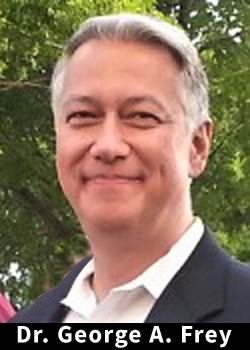Locations

Fax: (303) 762-9292

Pain Management for Facet Joint Pain: Radiofrequency (RF) Rhizotomy
The purpose of radiofrequency (RF) rhizotomy, or RF neurotomy, is to reduce or eliminate facet joint pain and related symptoms in the neck or low back. The goal of the procedure is to interrupt communication of pain between a specific medial nerve root and the brain. The medial nerve roots innervate the spine's facet joints.
Before a RF rhizotomy is performed, the pain generating facet joint nerve(s) (medial branch nerves) have been identified by means of a diagnostic injection, such as a facet joint or medial branch nerve block. Other tests may include MRI. Since the medial branch nerves do not control neck or low back muscles, it is not harmful to disrupt or turn off their ability to send signals to the brain conceived as pain.
RF neurotomy is a precisely targeted injection that works by creating heat to destroy a facet joint's medial branch nerve. Relief from pain and related symptoms may last a year or longer. However, the medial branch nerve root regenerates (grows back) and facet joint pain may come back. Results vary from patient to patient. For example, if there is instability at the segment where the RF neurotomy is performed, pain relief and its duration is less.

Anterior-posterior fluoroscopic view of a RF neurotomy procedure

Lateral fluoroscopic view of a RF neurotomy procedure
Basic Facet Joint Anatomy
Each vertebra in the cervical (neck), thoracic (chest), and lumbar (low back) has two sets of facet joints at the back of the spine. One pair faces upward and one downward with a joint on the left and right sides of the vertebra. Facet joints are hinge-like and link vertebrae together.

Each facet joint is innervated by a medial branch nerve. The medial branch nerves control sensation to the facet joint. These nerves do not control sensations or muscles in your arms or legs.
Patient Preparation: At Home
Below is a short list of common instructions. After you are seen at Colorado Comprehensive Spine Institute (CCSI), our doctor will provide a more specific list for you.
- Stop blood-thinning medication 5-days prior to the test
- Do not take any aspirin product 14-days prior to the test
- Stop anti-inflammatory medication 5-days prior to the test
- Stop pain medication 4-hours prior to the test
- Do not eat or drink 4-hours prior to the test
- Arrange for someone to drive you home
Patient Preparation: At the Medical Facility
- Our medical staff will review your history, condition, medications, allergies, and other pertinent information.
- You change into a gown and lie down in a hospital bed.
- A nurse monitors your heart function, blood pressure, blood-oxygen levels (finger oximeter), and other vital signs before, during, and after your procedure.
- Often times, medication is administered to relax you. However, during this procedure, you will be awake.
What to Expect During and After the Procedure
- The procedure is performed in a sterile setting similar to an operating room.
- Your injection site is cleaned and draped. Skin numbing medication is injected and given time to take effect.
- The doctor uses fluoroscopic guidance (real time x-ray) to guide the needle electrode beside the medial branch nerve. Through the electrode, mild electrical current (radiofrequency) stimulates the medial branch nerve. As the electrode is heated, the nerve is cauterized (burnt).
- After the procedure, you are moved to the recovery area where our medical staff continues to monitor your vital signs.
- You may be discharged home within an hour following your RF rhizotomy. Our medical staff provides you with written aftercare and home instructions. Included is information about what to expect, such as temporary numbness around the procedure site.
Possible Complications
A radiofrequency rhizotomy, like other medical procedures, may present risks. Complications include risk of infection, low blood pressure, headache, and allergic reaction to medication.
Conclusion
The morning after your radiofrequency rhizotomy, we will follow-up with you by telephone. However, if you have a question, please call our office for prompt assistance. We recommend you record your pain level and symptoms each day in a pain diary. It is very common to experience an increased pain level, or back soreness for a few days after the procedure. Your pain diary will help you provide your doctor with detailed information about your treatment progress during your follow-up office visit.








